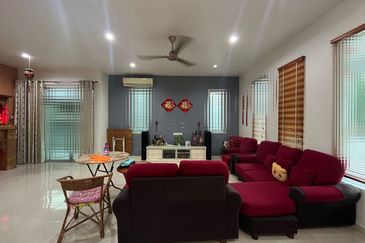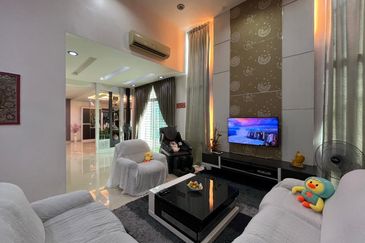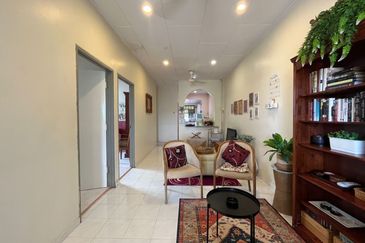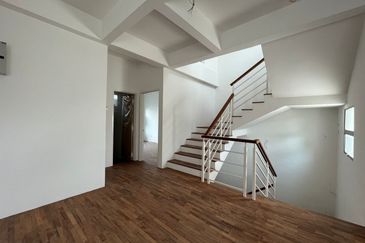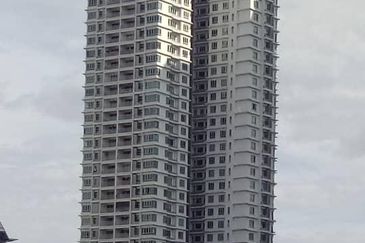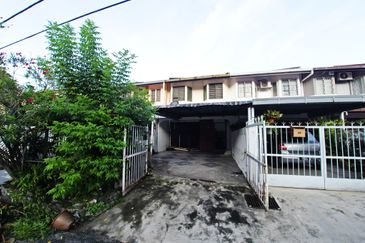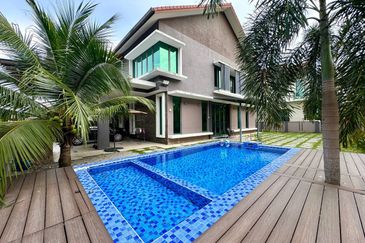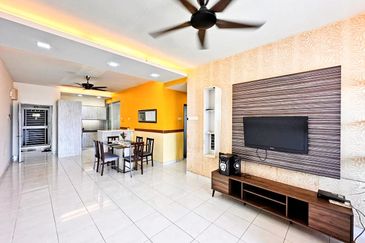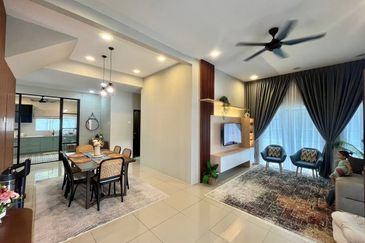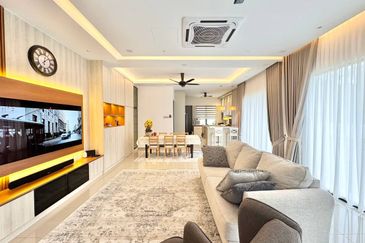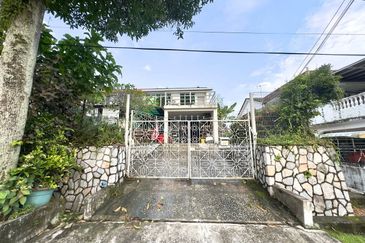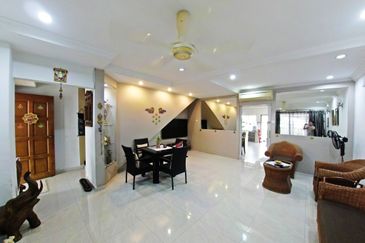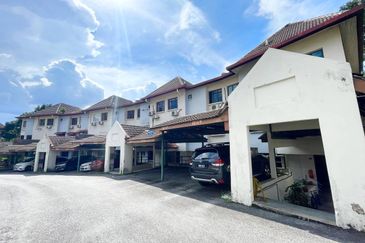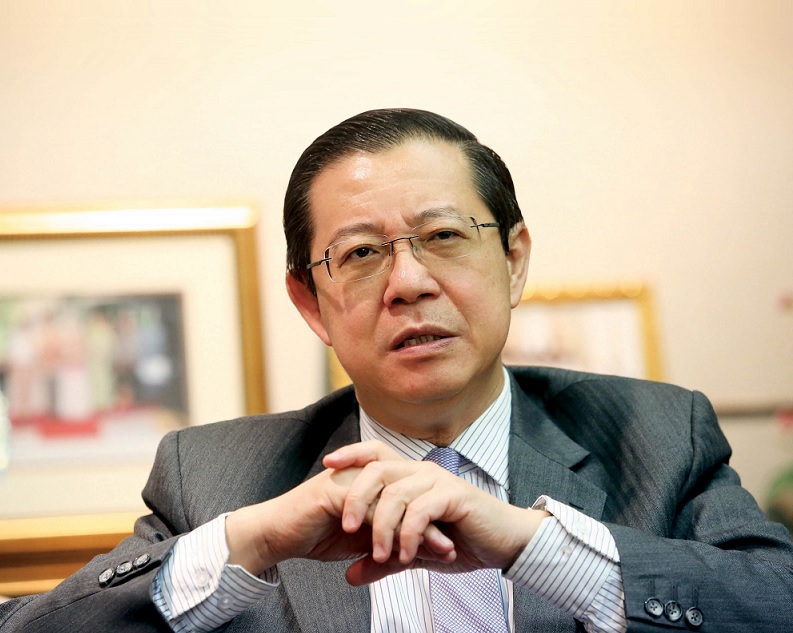
A MAN on a mission with great ambitions for his state, Penang Chief Minister Lim Guan Eng is all smiles as he strides into his office in Komtar. His solid handshake embodies his steadfast commitment to bringing competent, accountable and transparent governance to the state since he assumed office in 2008.
During his tenure, Penang has ranked among the highest recipients of investment in the country. According to Henry Butcher Malaysia (Penang) Sdn Bhd’s research report for 2Q2016, Penang recorded the highest foreign direct investment of RM4.5 billion, which contributed 20% to the country’s total FDI. While the manufacturing sector, in particular the electrical and electronics (E&E) industry, remains Penang’s core contributor of gross domestic product growth, followed by the services sector, the goal is for the growth of both sectors to converge.
While the country’s overall economic health will have an impact on Penang’s growth this year, Henry Butcher says the resilience of the state’s economy is expected to continue. Last year, the unemployment rate was a healthy 1.6%. The property consulting firm notes that unemployment stood at 3.5% as at June this year.
According to Henry Butcher’s report, property prices in Penang remained stable despite a decline in total volume and value of residential transactions last year. According to data by Henry Butcher Research and the Valuation and Property Services Department, the total value of transactions in 2015 registered a 15% drop to RM11.702 billion from RM13.77 billion in 2014. Last year saw a drop in total volume of transactions of around 4,000 compared with 25,555 units sold in 2014. Existing residential stock in the state stood at 402,494 units as at 2Q2016, with 217,467 units on Penang Island and 185,027 in Seberang Perai.
With a population of 1.66 million as at last year, Penang’s highest population density is in the northeast of Penang Island, with an average annual growth of 1.4%, followed by central Seberang Perai district on the mainland.
As Penang thrives as a popular location for property, investment and tourism, the state government is seeking to accommodate the growing population and address rising property prices with its RM27 billion transport master plan and affordable housing scheme. The target is to build 26,255 affordable homes in the state.
Lim talks to City & Country about his ambitions for Penang and what he hopes the future will bring for the state.
City & Country: You aspire for George Town to become an international city. Can you elaborate on your plans to achieve that and the progress of that vision?
Lim: To transform George Town into an international and intelligent city, a government has got to get a few things right. First and foremost, it must have good governance and clean leadership. Second, it must build and modernise infrastructure. Third, it is critical to build human talent, and fourth, the city has to be liveable … it has to be clean, green, safe and healthy.
Penang is greener than in the past. We are the greenest state with the highest recycling rate of 32%, compared with the national average of 10.5%. George Town is also one of the more healthy and safe cities in Malaysia with bicycle lanes and sports facilities. We’ve got over 10km of bicycle lanes and we want to do more to encourage people to cycle. We saw that the number of cyclists had increased and we feel dedicated bicycle lanes are needed for public safety. Plus, we will have a common bike-sharing system.
To be an international city, we must achieve international benchmarks. And to be an intelligent city, we must combine the latest technologies and human talent … the hardware and the software. This is where the fifth thing comes in, to make Penang an entrepreneurial and welfare state as we believe that both can coexist, where those who work hard can succeed, but not forgetting those who are left behind such as the sick, poor and disadvantaged who also need a safety net.
The state’s investments increased significantly from 2008 to 2012. What is the target for 2017 and how do you intend to meet it?
Our target is around RM4 billion, subject to global conditions. Between 2008 and 2015, we received about RM55 billion in investment, almost a 100% increase from between 2000 and 2007, when investment was RM29 billion. The investment has been mainly in the manufacturing sector.
Even though we are an industrialised state, whose manufacturing and services sector combined contribute 95% to the state’s gross domestic product, the services sector also contributes to the state’s tourism sector. We are currently promoting and
prioritising the MICE [meetings, incentives, conventions and exhibitions] industry, which is an important aspect of tourism in the state because those who come here for MICE spend four to five times more than regular tourists.
I think we can see extensive public facility and property development in Penang. And in terms of convention facilities, we are going to have Asia’s first subterranean exhibition centre with SPICE (or the Subterranean Penang International Conference & Exhibition Centre) by S P Setia Bhd on seven acres in Bayan Baru, next to the Penang International Sports Arena. Another convention centre is being built by IJM Land at The Light Waterfront.
For an island like Penang to have two new, large convention centres is quite something. And the fact that [developers] are willing to build convention centres shows that they are confident of Penang’s future.
What efforts are being made to continue to attract investment in the long term and in which sectors?
In terms of the manufacturing sector, our bedrock is the E&E industry. We hope to broaden our manufacturing base but will remain focused on E&E.
Apart from retail, medical and educational tourism are very important too. Coming to Batu Kawan are hospitals, international schools, shopping malls, and Ikea. Other than that, our heritage and local cuisine play important roles in tourism too.
Your plans with the Penang Transport Master Plan are very ambitious. How do you intend to implement them and manage any unforeseen limitations?
We are a victim of our own success. Our success in growing our manufacturing sector by almost 100% and in increasing our tourist numbers has made Penang more congested due to the influx of investors and visitors, despite our efforts to add new roads and broaden existing ones. Even our airport has exceeded maximum capacity five years ahead of schedule.
I feel the only way for the state to overcome traffic congestion is to have a ‘big bang’ approach, combining the use of road, rail, air and water transport. When we talk about rail, it involves the Light Rail Transit (LRT), not just on Penang Island but across to the mainland, so, the whole state is connected. As an additional mode of transport, we plan to build cable cars not just on Penang Hill but across the channel from the island to the mainland. And, in addition to new and existing roads, we are planning to have water taxis. We hope these alternative modes of transport will be completed by 2030, connecting both halves of the state through this holistic and integrated plan. It’s very exciting.
Limitations would be if the approval for the master plan is withheld. Nonetheless, we are expecting to obtain the approval by the end of this year or early next year.
What are the approaches taken and the progress in addressing the rising property prices and unaffordability concerns in Penang?
Property prices have escalated due to the growing number of investors and tourists in Penang. We are building affordable housing and providing incentives for private developers to build affordable homes. And we have set aside RM500 million for our public housing and affordable homes programme.
Public housing ranges from low-cost homes to low medium-cost homes ranging from RM42,000 to RM72,500. Affordable housing has a ceiling price of RM300,000 after we reduced it from RM400,000.
Our target is to build 26,000 units of affordable housing. Together with another 26,000 from the private sector, we will have 52,000 units of affordable homes and public housing, which I think will be enough to meet demand for new homes.
While development is important for the state, how do you strike a balance between development and the preservation of heritage and the natural environment?
Both must be sustainable. The preservation of heritage in the state is governed by very strict guidelines within the George Town heritage enclave. But there are some who want to extend these guidelines outside the heritage enclave, which would create problems because then how are we going to have development outside the heritage enclave?
There has been a lot of misinformation about the government wanting to build the LRT within the heritage enclave. We are building the LRT at the edge of the heritage enclave, and trams within the heritage enclave. The LRT is outside and does not go into the heritage enclave.
As for the preservation of the environment, for example, we don’t allow developments above 250 ft [above sea level] although there are those who received approval from the previous government under the special projects category. But we have not approved any private housing projects above 250 ft.
Also, we don’t cut down our forests. Not a single tree in the forest reserve has been cut down. When we want to remove trees to build new roads, for example, we don’t remove them by chopping them down, we replant them. We have recently replanted 16 trees, but that has attracted controversy and we don’t understand why.
As I’ve mentioned earlier, we are the greenest state in the country with the highest recycling rate. We want to be the first green state, the first bicycle state, and the only state to have no free plastic bags in shopping complexes. We have banned polystyrene [packaging], we have our [waste] separation at source programme, and we are also a signatory to the no shark’s fin campaign.
Can you share with us the short and long-term strategies and implementation of Seberang
Perai’s development?
We will focus on the same vision we have for the island, to have good and clean governance and to build talent and infrastructure. The mainland has been neglected but we are now doing a lot of public works projects, such as roads and public facilities. More money is being spent on the mainland now, about 55% to 60% compared with 40% to 45% previously.
And then there is Batu Kawan, which will be a new growth area. When the LRT connects the mainland and the island, both will be on par.
How do you plan to improve the quality of life and standard of living in other outlying fringes in Penang, bringing them on par with the more developed parts of the state?
Apart from bringing better connectivity and infrastructure, we must also provide for equitable and sustainable economic growth by building human talent that has the ability to compete globally. Education is the only way forward and we must train our people to not only be competitive but also to be smart.
To drive the economy, we are also thinking out of the box by encouraging art, for example. We hope that by having an art district, we will attract people. We hope to improve and enhance creativity and innovation by marrying art and technology, both being creative subjects. We believe an artistic person can also be creative and innovative.
What about the efforts to cultivate heritage, culture and art in Penang and what has proven successful?
Art and culture is a game changer in Penang. For example, the [street art] murals throughout George Town have attracted a lot of tourists.
Also, we have the annual George Town Festival (GTF) that was introduced in celebration of George Town’s designation as a Unesco World Heritage Site. The festival has grown into one of the premier art and cultural events in Southeast Asia and is considered a top event in Malaysia.
I think the GTF has become a success, despite limited funds, because people here enjoy one important aspect — the freedom of expression. Even though the event is [partly financed by public funds], the state government does not interfere with GTF director Joe Sidek in running the event — artists and performers have the freedom to express themselves through performance. The festival has attracted many visitors.
The GTF has expanded its reach to the mainland with the Butterworth Fringe Festival [that started last year].
George Town used to be a sleepy town, especially after 6pm, but now it is bustling with many nice little cafés, museums, art galleries and not forgetting our well-known local cuisine. Now, even Western fine dining has emerged in Penang.
What measures have been put in place to ensure that the long-term vision is realised regardless of any change in leadership?
One of our efforts was to end the privatisation of garbage collection and cancelling the recruitment of foreign workers. We then employed 2,500 Malaysians. Doing this has cost the state an additional RM20 million but I think it’s worth it because we are providing jobs for our people who are willing to work and do a good job, provided you give them a reasonable pay. At the end of the day, we are feeding 2,500 families.
Another one of our proudest achievements is agriculture-related. When we first came into power in 2008, we had no fish farms. Now, we have over 300 valued at RM1.2 billion a year. In terms of fish farming in the sea, we are now the biggest in Malaysia. All we did was simplify the process with three conditions — the fish farms must be owner-operated, they must be run by the owner who has obtained the permit or tendering occupation licence, and the farm cannot be more than 8,000 sq m. The farms come with a yearly rental of RM3,600, and the entire application process takes three months.
And there’s the Penang Transport Master Plan, for which we are expecting approval by this year or early next year, as I said earlier. If we don’t get the approval, we have to look for an alternative model. But there is no reason to reject the plan if the federal government has the national interest at heart, as we have ensured all the rules are complied with.
We have reason to be proud because we have managed to improve despite not getting assistance from the federal government, not just on the island but also the mainland. We have been building better roads and better infrastructure. And in future, our transport master plan, which is a life changer, can really put Penang on the map.
What is most important is to have a stable government with team spirit and the sharing of a common goal and vision. So, even if I’m no longer here, the goal and vision for Penang to be an international and intelligent city remains. Even my anointed successor shares the same vision, as we make decisions collectively as a team. There is collective leadership and we support each other.
We are focused on the fourth industrial revolution, which will be the future of the state. The first industrial revolution saw the invention of steam engines, the second was mass production and the introduction of electricity, the third was computers and the internet and the fourth, happening now, has got to do with the Internet of Things and big data analytics. To be a part of that, we have to have better infrastructure, connectivity and talent.
There is a positive buzz and a sense of optimism here because Penangites feel they can express themselves fully and realise their best potential. The people here know that they belong, the government is working for them and we are looking to the future.
This article first appeared in City & Country: Penang Special Report of The Edge Financial Daily, on Nov 28, 2016. Subscribe to The Edge Financial Daily here.
TOP PICKS BY EDGEPROP
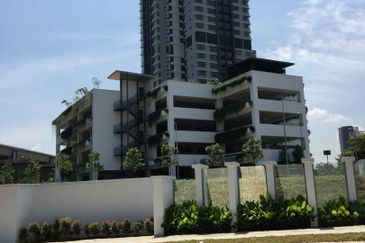
Infiniti 3 Residences
Wangsa Maju, Kuala Lumpur
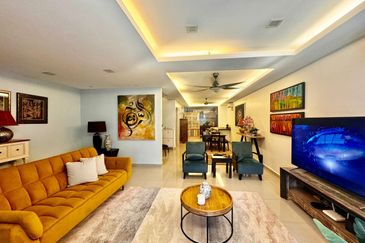
Taman Setiawangsa
Taman Setiawangsa, Kuala Lumpur
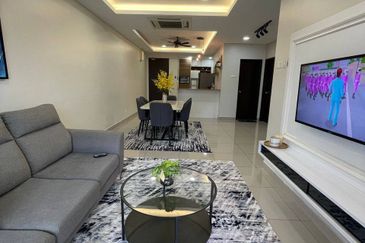
Residensi Zamrud (Zamrud Residensi)
Kajang, Selangor
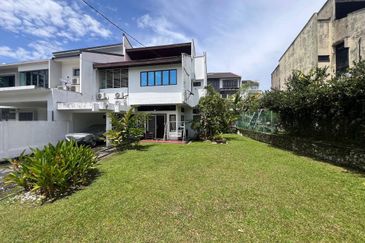
Damansara Heights (Bukit Damansara)
Damansara Heights, Kuala Lumpur
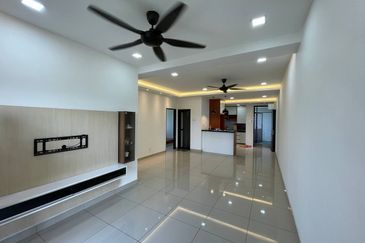
Residensi Zamrud (Zamrud Residensi)
Kajang, Selangor


